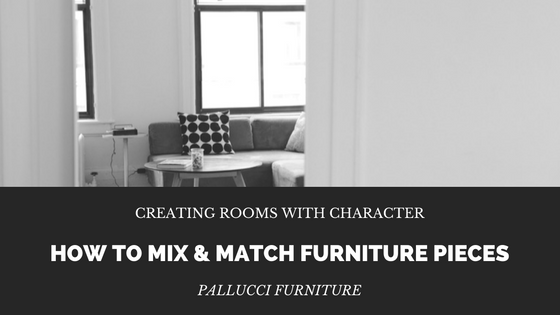
Long gone are the days when waltzing into a furniture store and picking up a matching living room set was the norm.
Unless you have an oddly shaped, miniscule bay window or another awkward nook in your living room space, there’s just no need to walk out with the sofa’s matching love seat – and your end tables don’t need to match your coffee table, either.
These days, showcasing your own style and building a space that accentuates your own unique character are achieved by mixing and matching furniture genre’s, styles and aesthetics to create richness and add depth to your space.
In this article, we’ll help describe how this can be done on a modest budget that maximizes both style and practicality.
Choose a Theme
This is job one – to be completed before you even step foot in a furniture store. Take some time and do your research with your roommate or spouse, and decide on a broad theme or style you’d both like to investigate. From here, dive head first into exploring the various options that epitomize this style.
Just because your furniture isn’t going to match exactly, doesn’t meant that there can’t be a commonality shared in the room; your ideas could even represent a specific moment in time – like 1930’s Paris, or a 50’s Cuban café – for example. You could choose to pick an era of furniture design as well – maybe a postmodern style that uses simple Scandanavian-esque design cues, or blocky mid-century western pieces to give off a plush, warm feel. Maybe you’re furnishing your cottage or seasonal home and you’re into full-on Canadiana – using plaids, wood, and dark stains to give the space a relaxing weekend vibe.
Your theme will dictate which type of pieces to look into, and which are easily dismissible. When you feel you have your theme selected, begin to research visuals of living spaces that interest you.
Stay on Track
It’s easy to take this newfound freedom for furniture expression too far – and we encourage it – to some extent. Remember to stay true to your own style and don’t push your picks to represent something you don’t identify with.
Pick pieces that you inherently like out of the bag. If the style you’re aiming for requires a specific type of piece, and you’re not into it from the get-go – leave it behind and find something that you’re going to be able to look at and use every day for the next 5-10 years.
If you’re drawn to vintage looking pieces or a specific colour palette, you’re going to inevitably have more luck with these items that selecting furniture that you find yourself having to justify. If you like something, try to picture it in your space, listen to your gut feeling and run with it. You’ll be much happier with the result.
Adding and Subtracting
Once you have everything in place, take a step back and look at what you’ve managed to create. If your space still seems incomplete, or like it’s missing something – this is the perfect time to accessorize and add décor to fill in the blanks.
Utilize items like throw pillows, blankets, wall art, and lighting fixtures to add to your design. Again, keep your own style guide in mind and listen to your taste. This stage is typically enjoyable, as you’ve done the brunt of the work already – this is when it all starts to come together.
For example, if you find that the colour palette you’ve chosen to work around is too dark for your space, try breaking up the hue by adding a bright area rug to break up the space. Curtains can help to add height to darker rooms, so investigate how to work with your existing style to create the perfect space.
If you still find it’s not working, begin taking away your least favourite piece of furniture, or adjusting your layout to allow for a more open-concept design, or more natural light.
Embrace Your Creativity
The thrifty aspect of designing and appreciating a mix-and-matched living space is utilizing what you’ve already accumulated. This way, you can limit your spending to two or three new key pieces that epitomize your new style, and use your existing things in new ways to keep your own pre-existing character.
Maybe you absolutely need a new sofa, or two new conversation chairs and a coffee table for your new living room – focus on these limited pieces and leave the end tables and area rugs, décor and accessories to what you already own. This helps to create an eclectic space that already exists, thanks to your fresh eyes and emerging style.
Focusing your effort on bringing in a few new select pieces forces you to expand your creative horizons and re-investigate what you already own to help you create a varied space for yourself.
Lock into Colour
Colour also plays a big role in creating a stylish updated space with mix-and-matched furniture. Likewise, it can work as a negative function: picture a beautiful burnt orange couch with a dark green painted wall – see?
Focusing on the colour or your space first will help to narrow down the huge array of choices when you begin looking at furniture. Tailor your selections to the overall colour of your new space – white or an off-white cream are perfect for matching a wide variety of styles and colours of furniture and décor, for example.
Creating this seemingly blank canvas allows you to interpret your furniture choices more easily by lifting the stigma of an ugly hue. Don’t associate your new furniture with a colour that can easily - and affordably – be replaced and updated. Focus instead on your vision for an eclectic space.

